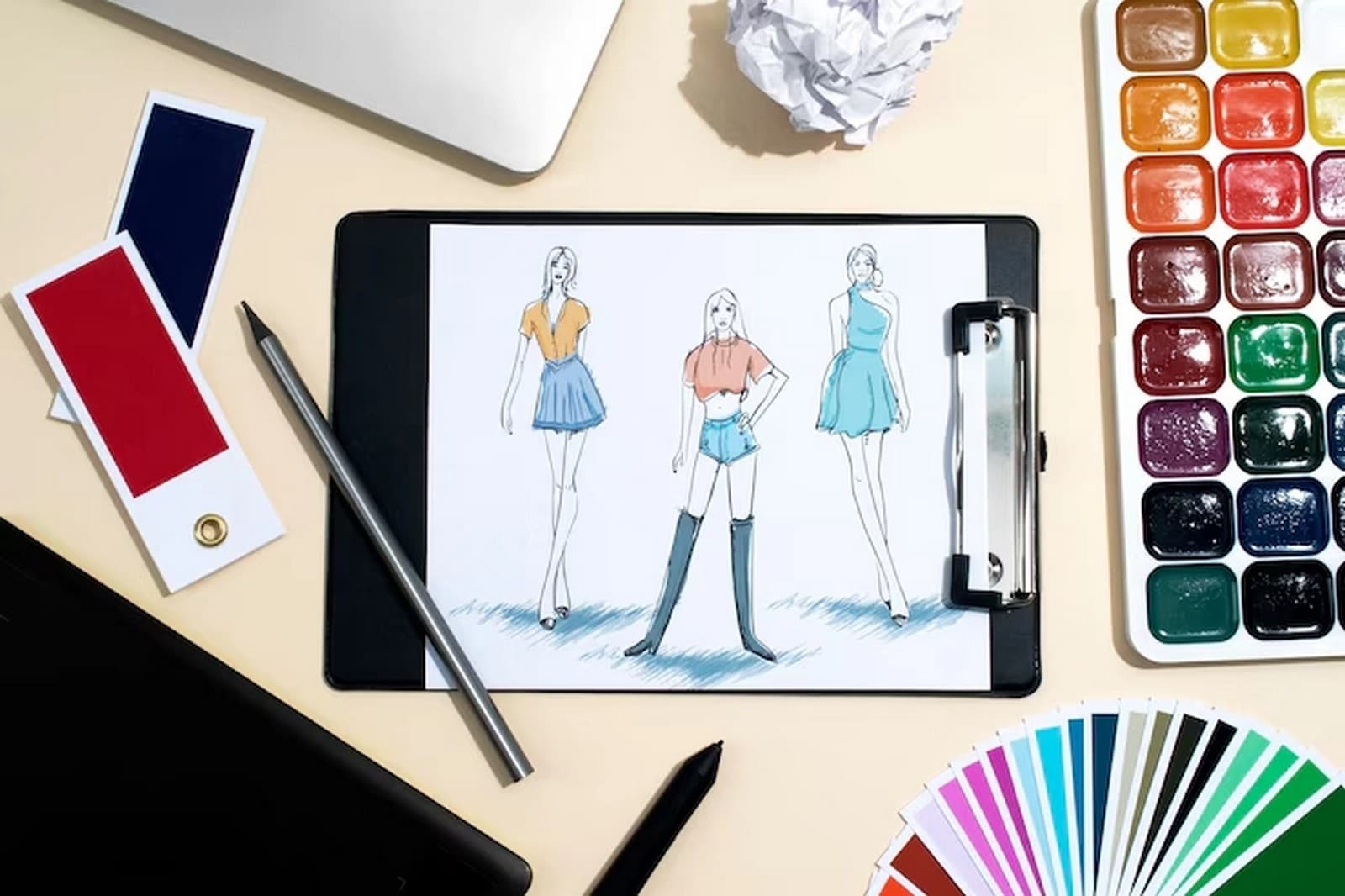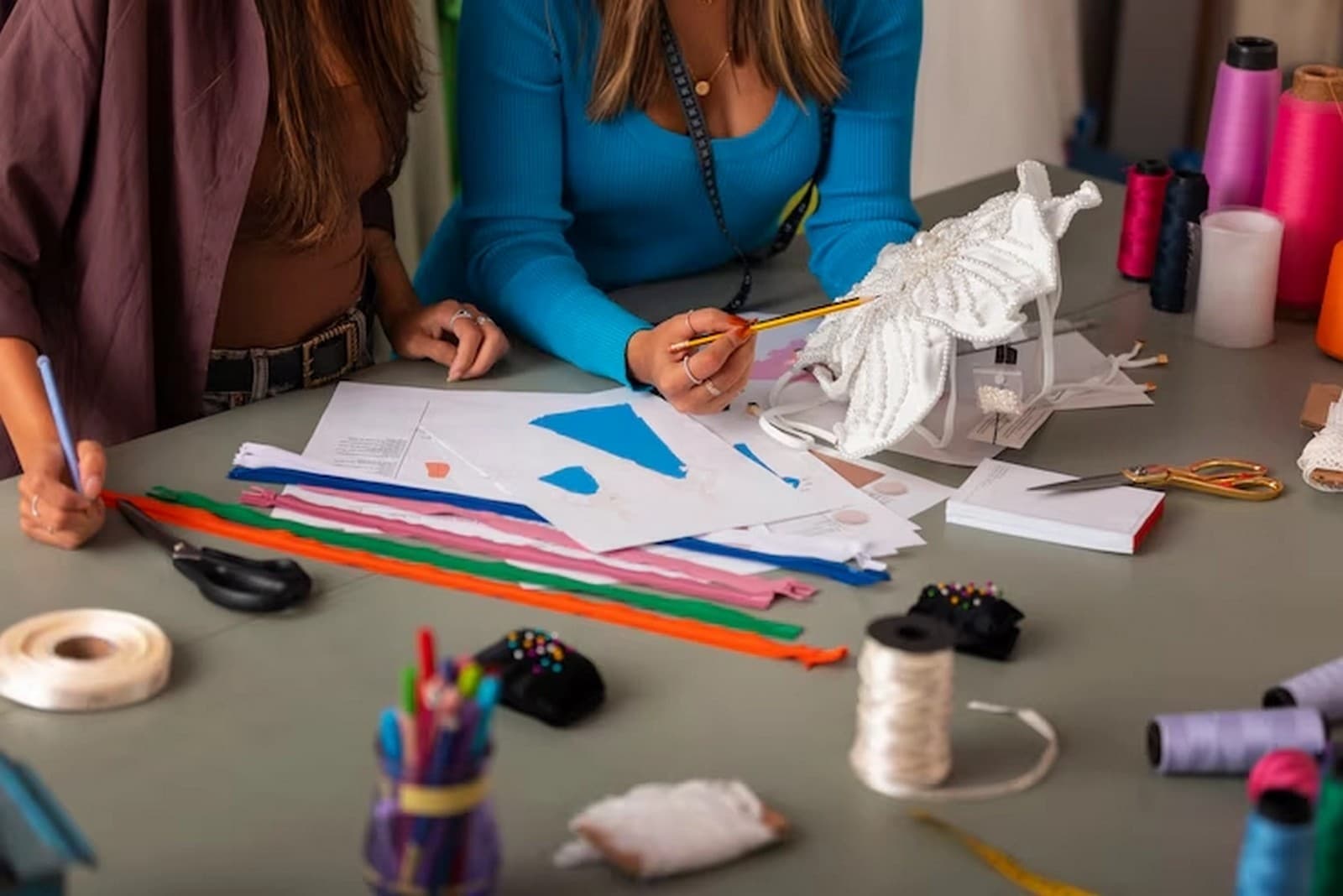New Fashion Illustration Techniques for Professional Artists
- Fashion Design
New Fashion Illustration Techniques for Professional Artists
Contact us
Bengaluru
Campus 1 : JD School of Design, No. 18-1, Brigade Road, Bengaluru,Karnataka – 560 001.
Campus 2 : No. 40, Swan House, 4th Cross, Residency Road, Bengaluru, Karnataka – 560001.
Goa
Musthtifund Saunstha , Near Mahalaxmi Temple,Dada Vaidya Road, Goa-403001
New Fashion Illustration Techniques for Professional Artists
The art of drawing clothes is a live or die skill in the fashion industry which simply wants to make designs on paper come alive. You can use the right techniques in order to make your designs look more life-like and appealing. For instance, if you want an idea to be outstanding, you can use various fashion illustrations that will help bring them into reality that makes them stand out amongst many different others.
Back to Basics
Before we get into advanced techniques, it’s important first to get acquainted with the basics of fashion illustration. This includes learning how to draw body proportions, basic sketching and understanding different fabrics.

Proportions and Anatomy
An accurate fashion drawing begins with having the correct proportion of body parts. The figures are usually exaggerated in terms of limbs that look longer and overall height when compared to actual human scales; this provides a more elegant and stylized appearance. To learn this principle try following the rule of 9-head proportion where nine times the length of head equals total height of figure. Just practise drawing simple anatomical shapes until your figures appear balanced and natural.
Basic Sketching
Once you have understood proportions, the next step is practicing basic sketching skills. Start with simple outlines that show pose or stance for each figure. Use thin strokes when making sketches so as not to overdo it too much. At this stage it’s about capturing flow and motion present in the human body.

Advanced Techniques to Enhance Your Illustrations
Now that you have a good grounding in the basics, there are more other techniques of fashion illustration for more poppy fashion illustrations.
Fabric Rendering
Representing different fabrics is one crucial part of fashion drawing. The way it behaves usually depends on its texture and weight. In case for instance silk flows easily and has gentle sheen whereas denim material tends to be stiffer with matte look. Look at how various materials crinkle, fold or capture light around them. To practice creating such textures using different shading techniques including cross-hatching, stippling as well as smooth shading can be useful depending on what kind of fabric you are illustrating.
Colouring Techniques
This is where your artwork can actually come alive. You can experiment with watercolor paints, markers or coloured pencils among others to get different shades. Each medium comes with its own advantages; watercolours give soft and flowing shades which are suitable for delicate fabrics while markers produce strong and vivid colours. Begin with a light wash shade and gradually build up layers so that depth and dimension may be created.
Digital Illustration
Learning digital illustration can prove invaluable in today’s digital age especially when Adobe Illustrator or Photoshop has all those options through which detailed with integrated pictures could be made. Thus, these digital tools make it easy to correct mistakes besides providing diverse brushes and effects that simulate real-life textures as well as colours. Spend some time learning these tools since they will largely speed up your workflow while at the same time boost your creativity.

Adding Personality to Your Designs
Besides having technical skills, fashion illustration is about telling a story and giving life to a personality. Here are some tips on how you can make your illustrations characterful.
Expressive Poses
Even the most perfect designs may look dull if they have static poses. Try out different poses that will reflect your design’s mood and style. From confident strides in power suits to graceful twirls in ball gowns, the pose should match well with the clothing and then bring it out even more.
Facial Expressions
Don’t completely ignore the face even though clothes attract most of the attention. A well-painted face showing proper expression could add a lot of life and personality to your fashion illustration. Practise various expressions and how slight changes in the eyes, mouth, or eyebrows can indicate different emotions.
Accessories and Backgrounds
Moreover, accessories and backgrounds can amplify the overall strength of your illustration. Items such as shoes, bags and jewellery can act as finishing touches that give context to your design. In addition, backdrops create depth; making the picture more appealing to look at.
Practice and Patience
Proficiency in fashion illustration is achieved through practice and patience. Do not be demoralised by initial difficulties. Keep practising frequently, get feedback from others and learn from mistakes made on this journey you are on . Over time, you will improve your skill level while fostering a unique style.
 Fashion illustration is an amalgamation of artistic talent plus knowledge about fashion. By mastering the fundamentals, exploring advanced en vogue techniques for drawing clothes, and adding charisma to your work make it more alive than ever before. Sketching with pencil on paper or using digital tools doesn’t matter but keep doing it without losing hope because it is important for learning purposes only. Your journey through fashion designing does not just involve beautiful pictures but also communicating your personal vision as well as creativity.
Fashion illustration is an amalgamation of artistic talent plus knowledge about fashion. By mastering the fundamentals, exploring advanced en vogue techniques for drawing clothes, and adding charisma to your work make it more alive than ever before. Sketching with pencil on paper or using digital tools doesn’t matter but keep doing it without losing hope because it is important for learning purposes only. Your journey through fashion designing does not just involve beautiful pictures but also communicating your personal vision as well as creativity.
FAQs
1.Which tools do I require to do fashion illustrations?
Essential tools include pencils, erasers, sketchbooks, watercolours, markers, and digital software like Adobe Illustrator and Photoshop.
2.How can I improve the appearance of my fabrics?
Study different fabrics, observe how they fold and catch light, and practice shading techniques to replicate these textures.
3. Do I need to do digital illustration for fashion design?
Although it isn’t necessary, learning digital illustration brings about a number of benefits including easy fixations as well as alternative effects among others.
4.Why are proportions important in fashion illustrations?
Correct proportions ensure that your figures look balanced and realistic which is crucial for accurately representing your designs.
5. What can I do to add more personality to my fashion illustrations?
To make your fashion illustrations more engaging and dynamic, try going for expressive poses while also adding backgrounds as well as accessories.
